Past Exhibition
YUKEN TERUYA | TESTIMONY TO A FALL
11 September – 16 November 2024
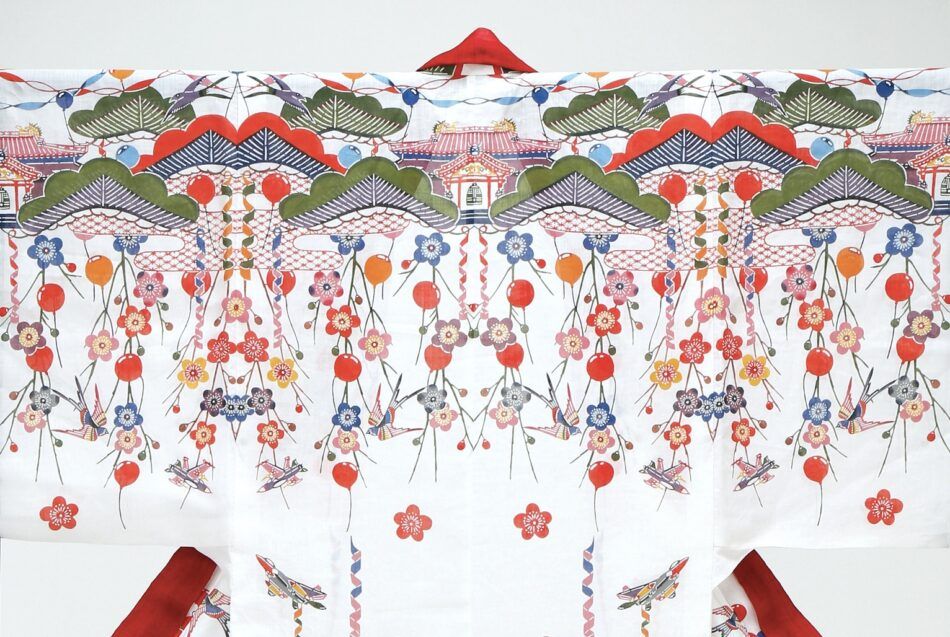
Yuken Teruya, Billowing, 2013
There is a phrase by Du Fu, “a country may fall but its mountains and rivers remain.” After Japan’s defeat in World War II, many Japanese recalled this verse and quoted it often. However, the verse does not apply to Okinawa, where the total number of bombs that exploded during the Battle of Okinawa in 1945 (including those dropped from aeroplanes and shelling on the ground) amounted to 200,000 tons of explosives. The colours of the Okinawan landscape — its natural shades of green and the red tiles of residences — have mostly turned grey. Even in villages that had never known the sea, ‘iron storms’ were a reminder of the threat from the sea that lay far behind the mountains. U.S. battleships firing artillery filled the offshore landscape of Okinawa with darkness. The Battle of Okinawa, which involved residents who were deployed as “a sacrificed stone” before the decisive battle on the mainland, killed one in four residents. The bombs that actually cause death, injury, and destruction are pieces of iron blown as storms. The explosives no longer have the shape of rockets or guns; they look more like crushed ore. Countless iron shards from the destruction have long been part of the Okinawan landscape. They continue to lurk quietly in the fields and bushes of the battlegrounds. It is as if they deny their past actions. The series of works To the Sky exposes fragments of bombs that continue to wait to be picked up and removed from memory by balloons.
The same landscape of storm debris extends to Ukraine, Palestine, and other contemporary battlefields. A piece of iron buried in nature is still someone’s product. Can the identity and responsibility of the manufacturer be allowed to fade away naturally? Even after an explosion, the weapons remain on the ground as fragments, not only to destroy someone’s life or cause destruction, but also to permanently change the terrain and environment. The manufacturer must be held responsible for the recovery of weapons after their manufacture, and for compensation in recognition of the contamination and damage caused.
The Bingata work (Kimono) entitled Billowing represents a free and liberated Okinawan sky. Balloons are not allowed to fly near the U.S. Marine Corps military airfields in Ginowan City, Okinawa, which are located in a densely populated area that includes many schools. Under the „control“ of the U.S. military, sovereignty has fallen from the sky. In this work, balloons have been adapted to feature in bingata patterns, which are used as costumes in traditional court dance costumes in Okinawa. Passing through the timeless patterns of irises, weeping cherry blossoms, and clouds, the balloons fly freely into an open sky.
The Monopoly series functions as a symbol of money itself, by using toy money (Monopoly money). It is an attempt to re-assess the power of symbols in cultural, national, and religious contexts, using these tokens as a tool to visualise values that cannot be measured. The Metropolitan Museum of Art, New York, the Louvre Museum, and Vatican city feature as subjects of this series. The concept extends to the investigation of symbols represented by the jewels which have been passed down through generations of the British Royal Family.
In Testimony to a Fall, Teruya invokes various senses of ‘the fall’ through the presentation of historical artefacts, the repetition of patterns, the design of jewels, and from those stories one receives through dialogue with his works.
Yuken Teruya (1973, Japan) is an artist based in Berlin and Okinawa. Teruya received his BFA from Tama Art University in Tokyo in 1996 and his MFA from the School of Visual Arts in New York in 2001, where he has spent 20 years of his life. His works have been exhibited at Pompidou Metz, Metz, the Saatchi Gallery, London, and are in the public collections of the British Museum, the Museum of Modern Art, New York, the Guggenheim, New York, the Flag Art Foundation, New York, the Renwick, New York.
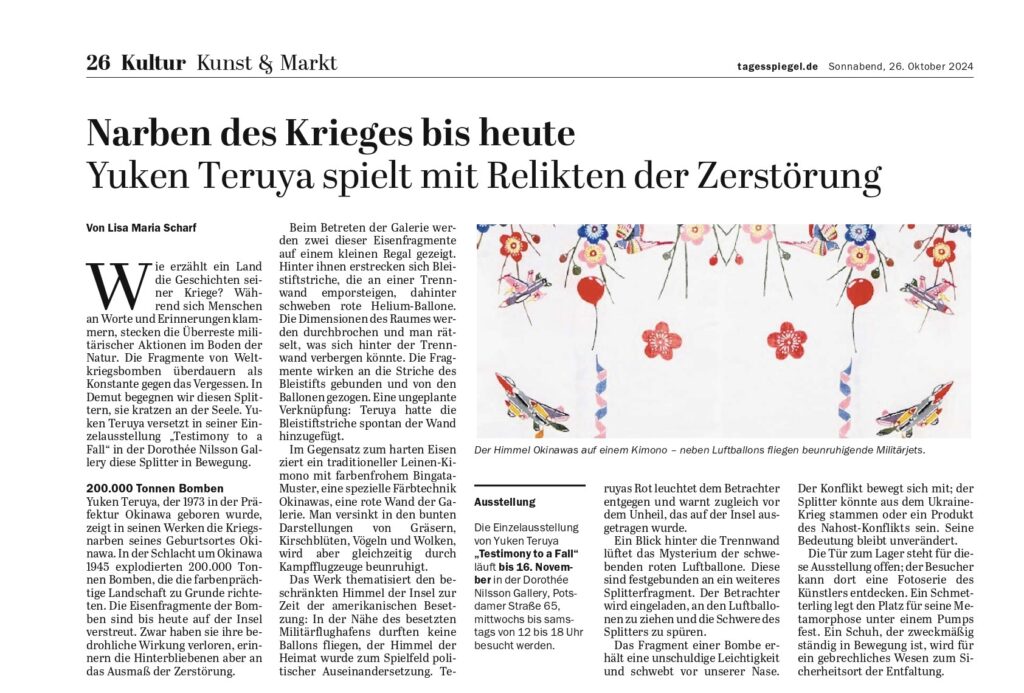
Tagesspiegel, 26.10.2024
Es gibt ein Sprichwort von Du Fu: „Ein Land kann fallen, aber seine Berge und Flüsse bleiben“. Nach der Niederlage Japans im Zweiten Weltkrieg erinnerten sich viele Japaner an diesen Vers und zitierten ihn oft. Er trifft jedoch nicht auf Okinawa zu, wo während der Schlacht um Okinawa 1945 insgesamt 200.000 Tonnen Bomben explodierten (einschließlich der von Flugzeugen abgeworfenen Bomben und der Granaten am Boden). Die Farben der okinawanischen Landschaft – ihr natürliches Grün und die roten Ziegel der Häuser – sind größtenteils grau geworden. Selbst in Dörfern, die nie das Meer gesehen hatten, erinnerten „Eisenstürme“ an die Bedrohung durch das Meer, das weit hinter den Bergen lag. Artilleriegeschütze amerikanischer Schlachtschiffe erfüllten die Landschaft vor Okinawa mit Dunkelheit. In der Schlacht um Okinawa, in der die Bevölkerung als „Opferstein“ vor der Entscheidungsschlacht auf dem Festland missbraucht wurde, kam jeder vierte Einwohner ums Leben. Die Bomben, die Tod, Verletzung und Zerstörung verursachten, wurden zur Eisenfragmenten, die der Feuersturm über die Insel gebracht hatte. Die Sprengkörper haben nicht mehr die Form von Raketen oder Kanonen, sondern ähneln eher zermahlenem Erz. Unzählige Eisensplitter, die aus der Zerstörung stammen, sind längst Teil der Landschaft Okinawas geworden. Still lauern sie in den Feldern und Büschen der Schlachtfelder. Es ist, als verleugneten sie ihre vergangenen Taten. Die Werkserie To the Sky zeigt Bombenfragmente, die weiterhin darauf warten, von Ballons aufgenommen und aus dem Gedächtnis gelöscht zu werden.
Die gleiche Landschaft aus Sturmschutt erstreckt sich über die Ukraine, Palästina und andere zeitgenössische Schlachtfelder. Ein Stück Eisen, das in der Natur vergraben liegt, ist immer noch das Produkt eines Menschen. Kann man die Identität und die Verantwortung des Herstellers auf natürliche Weise zum Verschwinden bringen? Selbst nach einer Explosion bleiben die Waffen als Fragmente im Boden und können nicht nur Menschenleben zerstören oder Verwüstungen anrichten, sondern auch das Gelände und die Umwelt nachhaltig verändern. Der Hersteller muss dafür verantwortlich gemacht werden, dass die Waffen nach der Produktion wieder eingesammelt und für die verursachte Verseuchung und den Schaden entschädigt werden.
Die Arbeit von Bingata (Kimono) mit dem Titel Billowing stellt einen freien und befreiten okinawanischen Himmel dar. In der Nähe des Militärflugplatzes der U.S. Marine Corps in Ginowan City, Okinawa, der sich in einem dicht besiedelten Gebiet mit vielen Schulen befindet, dürfen keine Ballons fliegen. Unter der „Kontrolle“ des US-Militärs ist die Souveränität vom Himmel gefallen. In dieser Arbeit wurden Luftballons in Bingata-Muster verwandelt, die in Okinawa als Kostüme für traditionelle Hoftänze verwendet werden. Mit den zeitlosen Mustern von Iris, Kirschblüten und Wolken fliegen die Ballons frei in den offenen Himmel.
Die Monopoly-Serie fungiert als Symbol für das Geld selbst, indem sie Spielgeld (Monopoly-Geld) verwendet. Es ist ein Versuch, die Macht von Symbolen in kulturellen, nationalen und religiösen Kontexten neu zu bewerten, indem diese Spielmarken als Werkzeug zur Visualisierung von Werten verwendet werden, die nicht gemessen werden können. Das Metropolitan Museum of Art in New York, der Louvre und der Vatikan sind die Themen dieser Serie. Das Konzept erstreckt sich auch auf die Untersuchung der Symbole, die durch die Juwelen repräsentiert werden, die von Generation zu Generation in der britischen Königsfamilie weitergegeben werden.
In Testimony to a Fall evoziert Teruya verschiedene Bedeutungen von „Fall“ durch die Präsentation historischer Artefakte, die Wiederholung von Mustern, das Design von Schmuckstücken und durch die Geschichten, die man im Dialog mit seinen Werken erfährt.
Yuken Teruya (1973, Japan) ist ein Künstler, der in Berlin und Okinawa lebt. Teruya machte 1996 seinen BFA an der Tama Art University in Tokio und 2001 seinen MFA an der School of Visual Arts in New York, wo er 20 Jahre seines Lebens verbrachte. Seine Werke wurden im Musée Pompidou Metz, Metz, in der Saatchi Gallery, London, ausgestellt, und sie gehören zu den öffentlichen Sammlungen des British Museum, des Museum of Modern Art, New York, des Guggenheim, New York, der Flag Art Foundation, New York, des Renwick, New York.
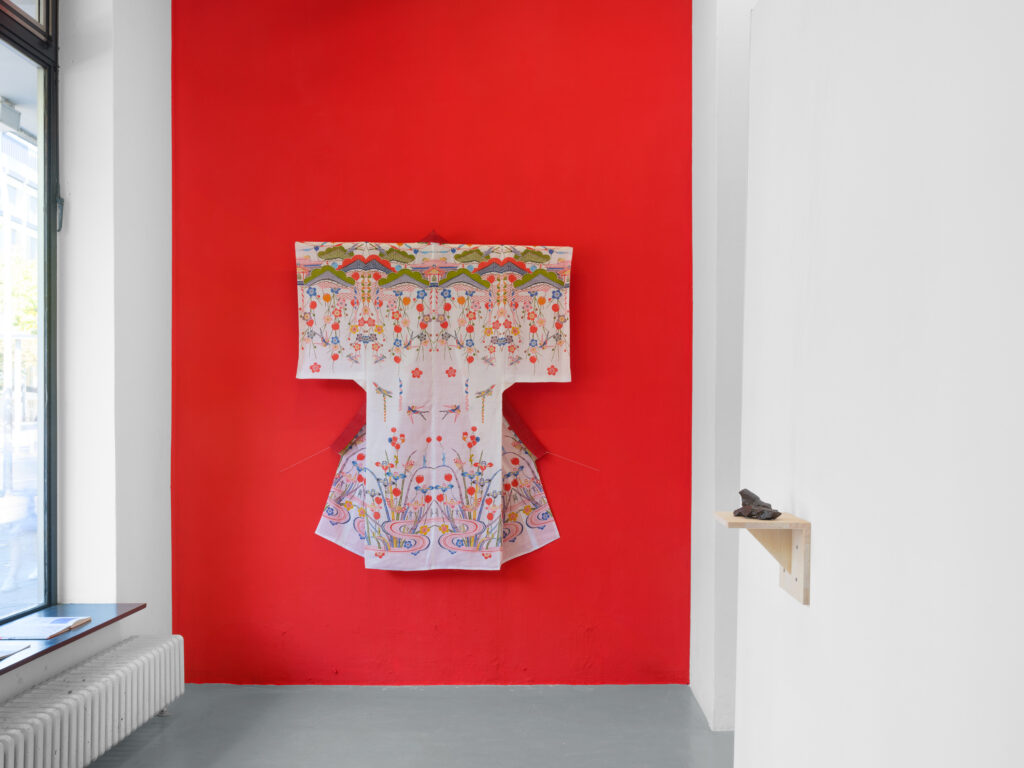
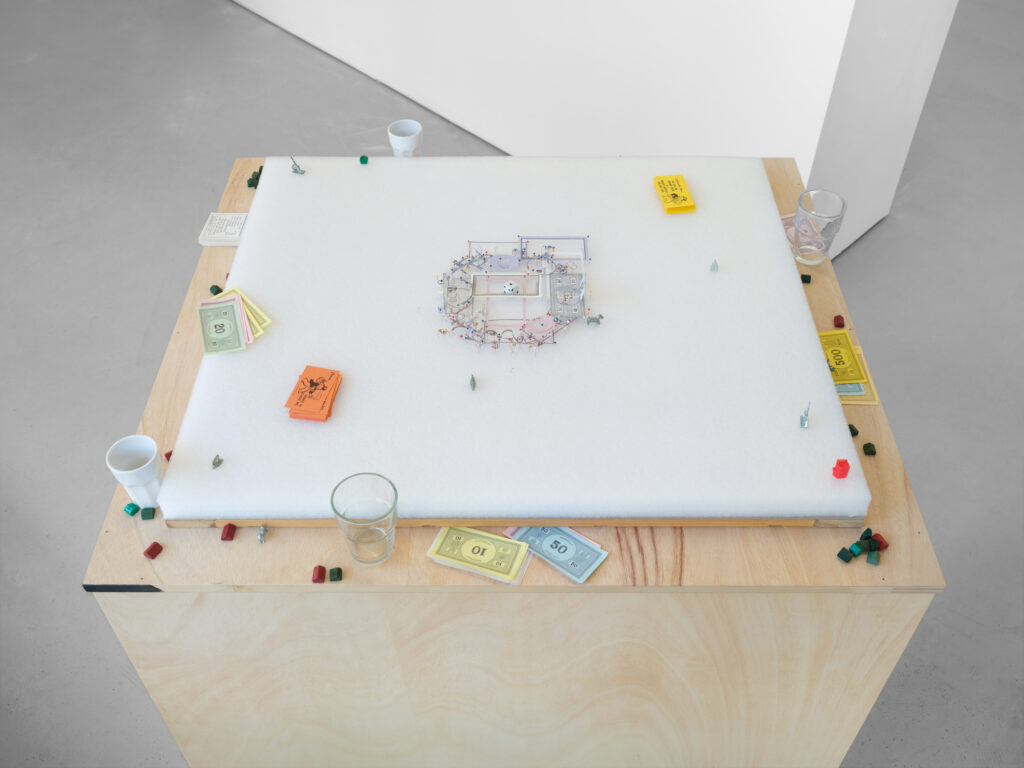
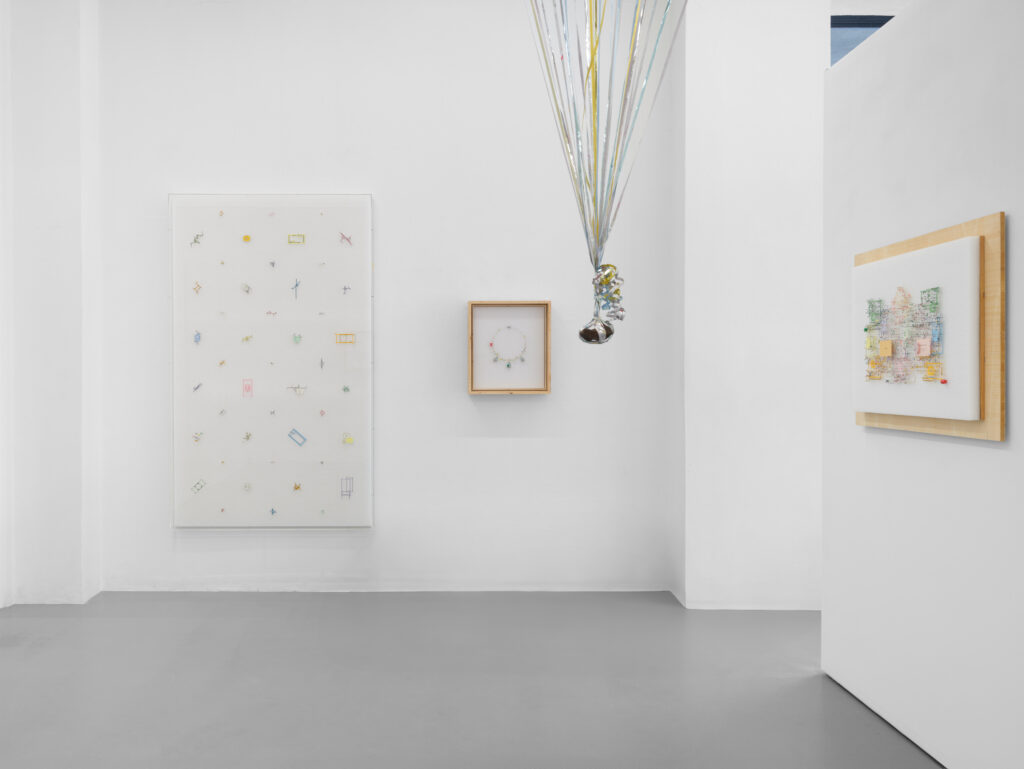
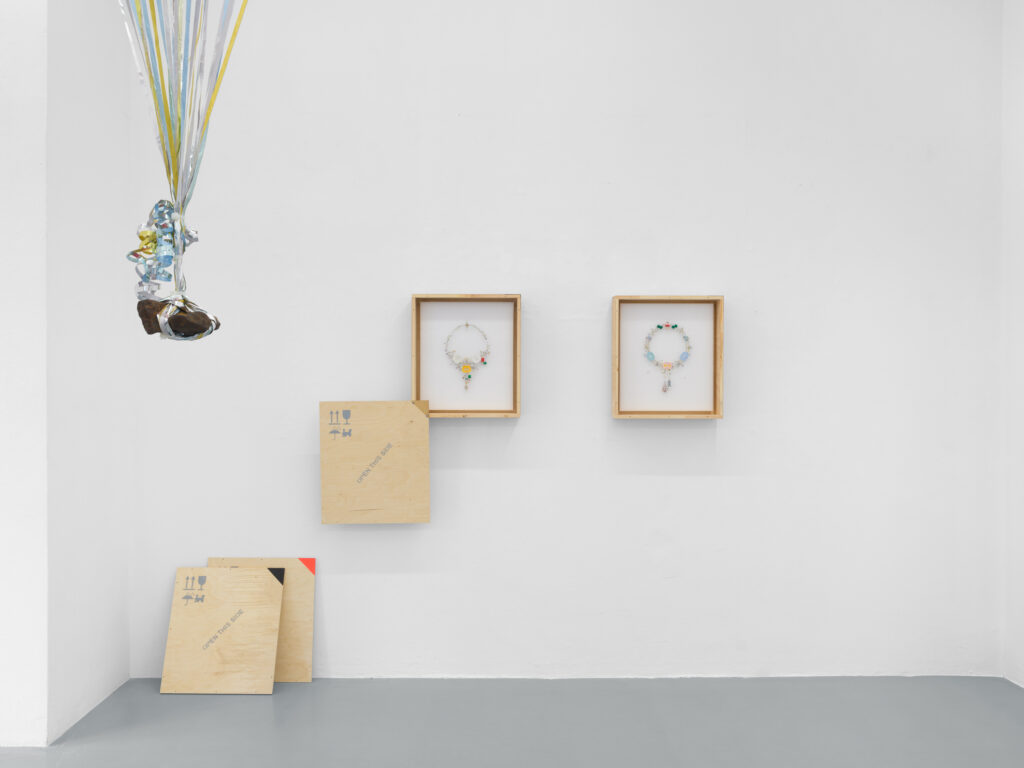
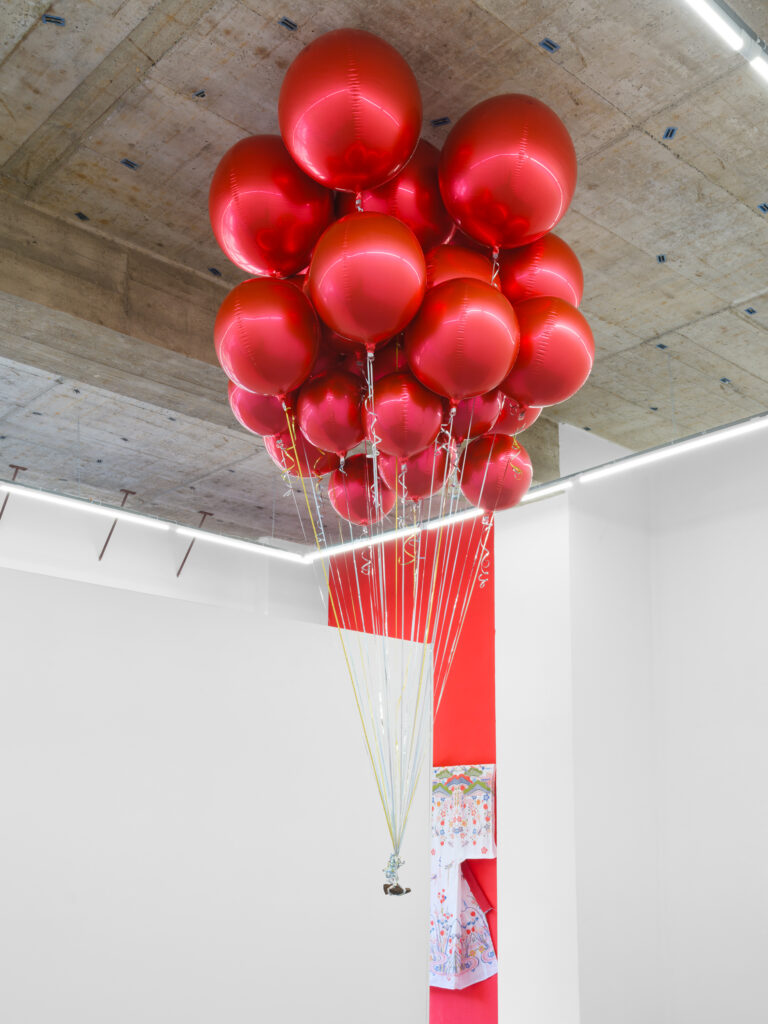
Installation images of „Testimony to a Fall“, Dorothée Nilsson Gallery, 2024, ph. Marjorie Brunet Plaza Roberts